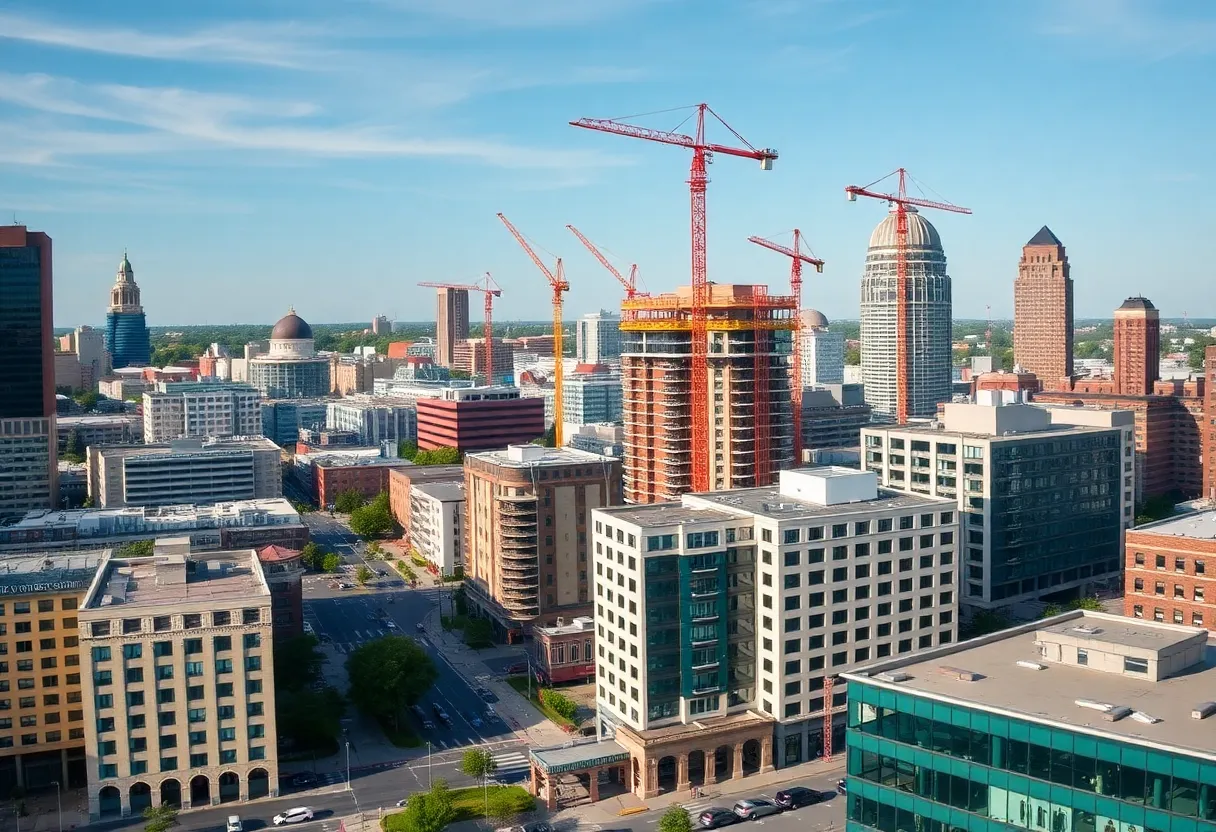Columbus, Ohio, August 21, 2025
News Summary
Columbus, Ohio, ranks fifth in the nation for apartment construction, driven by rising demand from a growing population. With projections of 1 million more residents in the next two decades, local authorities are approving measures to enhance affordable housing options. Recent developments include a mix of luxury and affordable housing projects, addressing the need for more units. While downtown construction surges, challenges persist regarding costs and availability of low-income housing. The city’s focus remains on meeting the housing demands of its expanding population.
Columbus Ranks Fifth Nationally in Apartment Construction as Population Growth Soars
Columbus, Ohio has emerged as a leading city in new apartment construction, ranking fifth nationally for multifamily building permits per capita. A recent analysis found the Columbus metro area issued 42 building permits per 10,000 people in the past year, placing the city ahead of several large markets but behind others such as North Port, Florida; Cape Coral, Florida; Austin, Texas; and Raleigh, North Carolina. This information is part of a local initiative focused on central Ohio’s rapid growth.
The findings highlight a region undergoing rapid change as central Ohio anticipates a population increase of about 1 million residents over the next two decades, which translates to a need for roughly 14,000 new homes annually according to the Building Industry Association of Central Ohio. Local housing advocates describe the boom as a good-news, bad-news situation, noting that the area is still building only about half of what is needed to meet demand.
In response to growing demand, the apartment supply has expanded, impacting the luxury rental market and contributing to a softening of rents in some segments. At the same time, there is a notable lack of starter homes and affordable housing for lower-income residents, raising concerns about long-term affordability even as the market heats up.
The local housing landscape includes a range of initiatives designed to increase supply and stabilize prices. A housing initiative and related programs are highlighted as potential routes to address affordability, while public and nonprofit agencies pursue strategic acquisitions and new developments to provide affordable options for residents.
On August 15, the Columbus Metropolitan Housing Authority (CMHA) approved several projects aimed at providing affordable housing for about 1,733 new residents. The CMHA is financing these projects with about $86.3 million in bonds, which will fund 698 new units among other developments. One major project, The Falls, is a 220-unit complex that CMHA will self-fund for the first time. In another effort, CMHA plans to purchase Rosebrook Village in Reynoldsburg for $26 million to preserve affordable housing stock.
Another CMHA plan, AspireCOLUMBUS, is set to be an 82-unit apartment complex in downtown Columbus, primarily serving low- and middle-income families. Over the past five years, downtown Columbus has seen substantial apartment construction, with 8,090 new units built downtown, representing 40.4% of all new apartments in the city. This is an increase from the pre-pandemic share of 35.7%. As population growth shifts residents outward, movement away from downtown remains noticeable.
The Housing Authority is exploring additional mixed-use developments and apartment complexes throughout the city to broaden supply further. The cost of the 82-unit AspireCOLUMBUS project has drawn attention, with an average cost of roughly $353,658 per unit, higher than typical Ohio costs. Contributing factors include mandatory compliance with green energy standards and rules tied to low-income housing tax credits. Parking for the project is limited, with 70 spaces for 82 apartments, and additional paid parking will be available to residents and guests.
Downtown Growth, Shifts, and Future Developments
Downtown Columbus has long been a hub for apartment growth, but recent population trends in surrounding areas mean many people are choosing to live outside the core. The Housing Authority continues to pursue additional mixed-use developments and other apartment projects across the city to meet demand while addressing affordability challenges.
Key figures at a glance
Permits per 10,000 residents in the past year: 42
Downtown share of new apartments (five-year total): 40.4%
Affordable units approved by CMHA (The Falls + AspireCOLUMBUS): 780
CMHA bond funding: $86.3 million
AspireCOLUMBUS units: 82
Parking spaces for the 82-unit AspireCOLUMBUS project: 70
Cost per unit for AspireCOLUMBUS project: $353,658
Key features chart
Frequently asked questions
A: Columbus ranks fifth nationally for multifamily building permits per capita, with 42 permits per 10,000 residents reported in the past year.
A: The city issued 42 building permits per 10,000 residents in the past year.
A: CMHA approved projects including The Falls, a 220-unit complex funded in part by bonds, and AspireCOLUMBUS, an 82-unit downtown development. The agency also planned the purchase of Rosebrook Village to preserve affordable housing and to support new residents.
A: Population is projected to rise by about 1 million residents, creating an expectation of roughly 14,000 new homes annually.
A: Higher costs are driven by requirements tied to green energy standards and low-income housing tax credits, which influence construction expenses per unit.
A: The Falls will add 698 new units, AspireCOLUMBUS will add 82 units, totaling 780 affordable units in these projects.
A: Yes, the project includes 70 parking spaces for 82 apartments, with additional paid parking expected for residents and guests.
Deeper Dive: News & Info About This Topic
Additional Resources
- 10TV: Columbus Ranks 5th Nationally in Multifamily Housing Permits
- Dispatch: CMHA’s Recent Plans for Affordable Housing
- NBC4: Columbus Ranks Among Top 10 Cities in Downtown Apartment Construction
- Dispatch: Columbus Housing Authority Sole Funder on 220-Unit Refugee Road Complex
- Wikipedia: Affordable Housing





